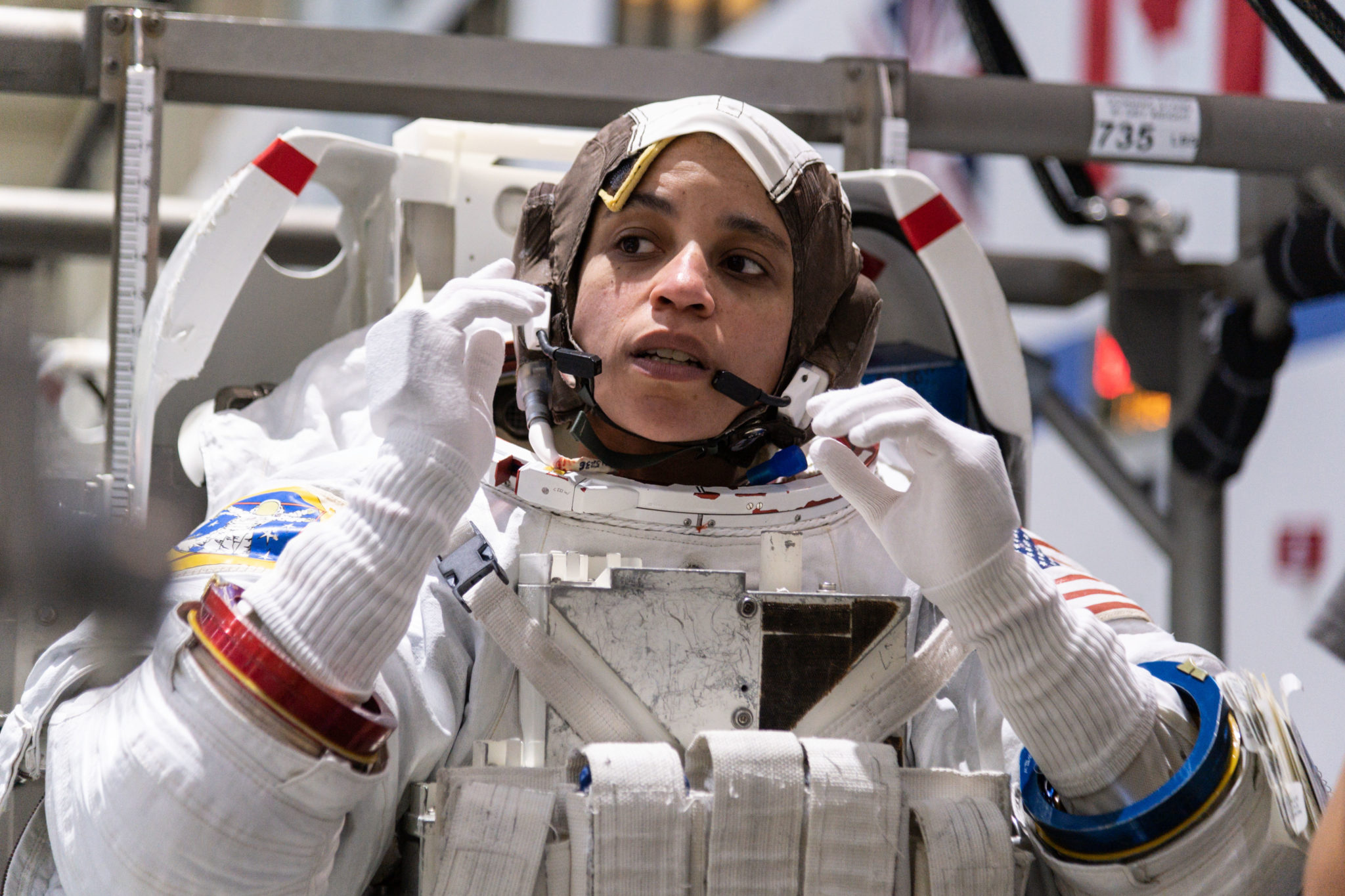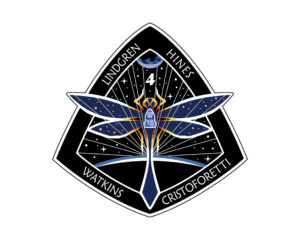Encased in the latest NASA/SpaceX hardware, powered by liquid oxygen and rocket grade kerosene, while separating from Earth at 17,500 miles per hour, the four astronauts of NASA’s Commercial Crew-4 remain tethered to their humanity.
Before dawn on April 27, mission commander and Colorado State University alumnus Kjell Lindgren, pilot Bob Hines, mission specialist Jessica Watkins of Lafayette, Colorado, and mission specialist Samantha Cristoforetti of the European Space Agency successfully launched to the International Space Station on a SpaceX Crew Dragon spacecraft atop a Falcon 9 rocket.
The astronauts arrived at Kennedy Space Center on April 19 and greeted their colleagues with elbow bumps and laughter while answering media questions.
“NASA and our partners are really good at training us on the science. That team spirit is one of the things you can’t really train,” Lindgren said in a pre-launch press conference. “We have the chance to go out to dinner together, train together, to bond; that’s what makes us successful, working with a great group of folks on the space station and on the ground.”

“We are so excited to be here with this crew, this team,” Lindgren said. “What an amazing time to be a part of human space flight. We are ready to get to work.”
Some of that work involves waiting. The launch was delayed several times due to weather and logistics at the busy spaceport.
In the days leading up to the launch, the crew spoke about earthly pleasures – sand on their feet, feeling the wind, eating real food with family, launching model rockets on the beach – while performing the rigorous pre-flight preparation for months in space.
“To come back to Kennedy Space Center to launch from a historic launchpad and see all the activity – it is incredibly exciting to be a part of it, for our agency, for our country and our international partners,” said Lindgren in a pre-flight press conference. “It is such a privilege to be reaching for things just beyond our grasp.”
One thing that is now in their grasp is USB ports, which were recently added to the crew capsule. “It’s the little things. Next, a coffee maker,” Lindgren joked.

The mission lifted off from the historic Apollo Launch Complex 39A at the Kennedy Space Center in Cape Canaveral, Florida, in a new Dragon spacecraft named Freedom. The crew chose the name in tribute to Freedom 7, the first United States human spaceflight, and to celebrate a fundamental human right.
This is the first spaceflight for Hines and Watkins, and the second for Lindgren and Cristoforetti. Watkins, who grew up in Lafayette and graduated from Fairview High School in Boulder, is the first Black woman to serve on an International Space Station long-term mission. “I’m super excited to represent Colorado, with Kjell as well,” Watkins said. “We get to be the representative of an enormous team of people.”

“This is certainly an important milestone for our agency and our country. I’m honored to be part of the legacy of Black women and Black astronauts that came before me,” Watkins told reporters. “I would encourage young girls, children of color, children in general, to find something that you love and pursue that relentlessly.”
The eyes and hands of humanity
The astronauts are the eyes and hands of a team of researchers all over the world studying microgravity, said a NASA administrator.
One of the nearly 300 experiments on this mission will examine how weightlessness affects wound healing, “which brings me back to my CSU days as well, given CSU’s reputation as a veterinary training center,” Lindgren said.
The crew will again grow edible plants as part of the XROOTS project, which uses hydroponic and aeroponic techniques, but they won’t get to eat them, as Lindgren did on his last mission with Veg-01, which produced red romaine lettuce. Lindgren became one of the first people to taste a plant grown in space.
“That is an amazing thing, to plant it, then to watch it grow to the size that it can be harvested, to recognize that this could be a really important part of space flight as a source of food and even as part of our environmental control system,” Lindgren said. “To see a little part of what science fiction has described for a long time … and then to have that as part of a meal was a lot of fun.”
Many astronauts cite sci-fi as their inspiration, and the crew hinted at a surprise uniform during the mission.
In a video call from Dragon Freedom prior to docking with the space station, the crew shared their view of Earth as they crossed the terminator line between day and night, also know as the “twilight zone.”
The best part so far? “The launching sensation of the rocket last night was absolutely amazing. It was an incredibly smooth ride and then to feel the weightlessness after we got into orbit,” Lindgren said.
A friend to his Colorado alma maters
After his first mission to the space station in 2015, Lindgren visited the CSU campus for a two-day event that included a keynote address, “The View from Space,” sessions with students, and a visit to CSU Professor Susan Bailey’s laboratory, where she and her team study the effects of radiation on astronaut’s DNA.
As a flight engineer and “ship doctor,” he drew blood from crewmate astronaut Scott Kelly as part of NASA’s “Twins Study,” which involved Bailey’s telomere research. Bailey’s lab received frozen blood samples directly from the space station, shipped to Earth via a SpaceX Dragon cargo vehicle.

Lindgren earned a bachelor’s degree from the U.S. Air Force Academy, followed by a master’s degree in cardiovascular physiology from CSU in 1996, and an MD from the University of Colorado School of Medicine. He then completed a two-year residency in aerospace medicine and a master’s degree in public health at the University of Texas Medical Branch in Galveston, Texas. He is board-certified in emergency and aerospace medicine.
He was selected as an astronaut in June 2009, and flew on Expedition 44/45 in 2015, logging 141 days in space, two spacewalks and more than 100 scientific experiments.
Lindgren said his master’s research on the effects of weightlessness on cardiovascular physiology was invaluable. CSU’s new partnership with his medical school alma mater brings it all full circle, he said.
“CSU was such a remarkable experience,” he told CSU’s Jeff Dodge in a pre-flight interview. “I got to focus on something very specific and nerd out on my particular area of study. And to be able to experience what I described in my research was so cool.”